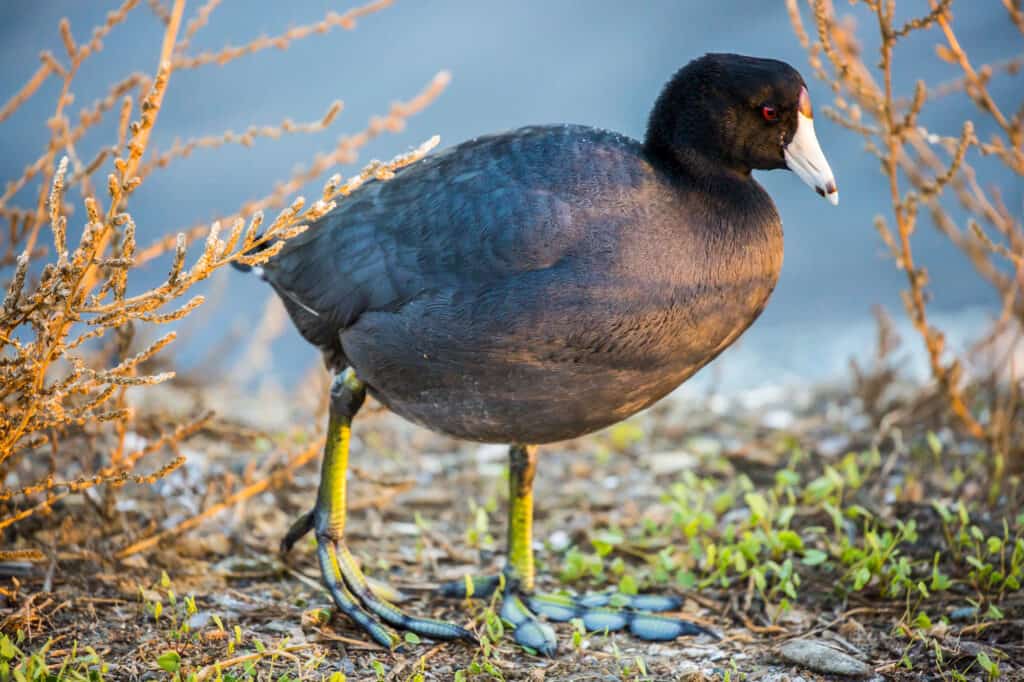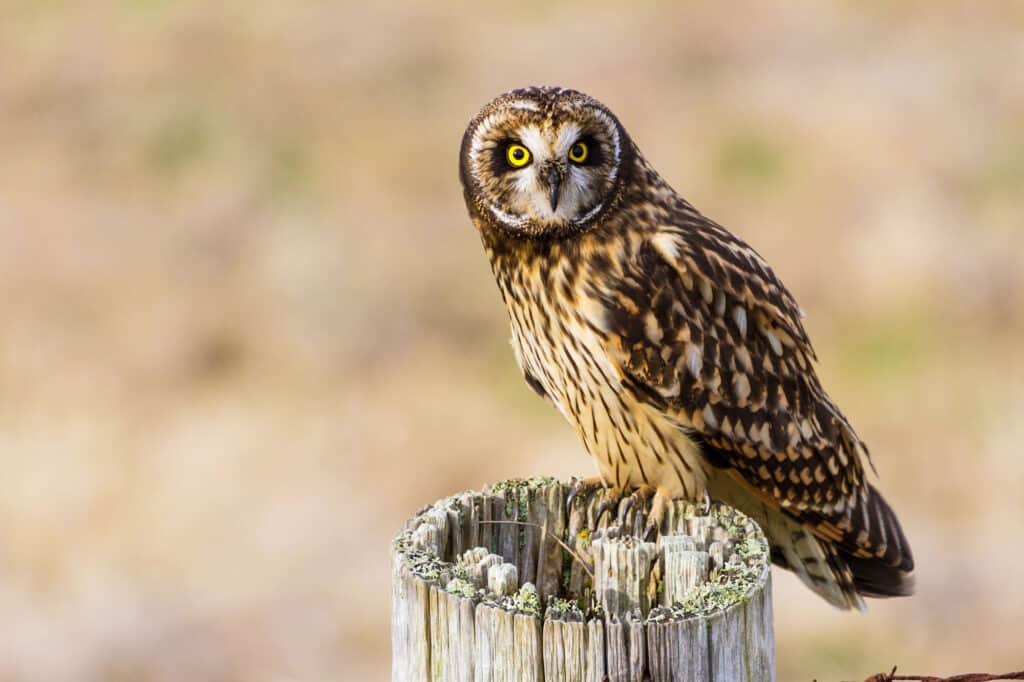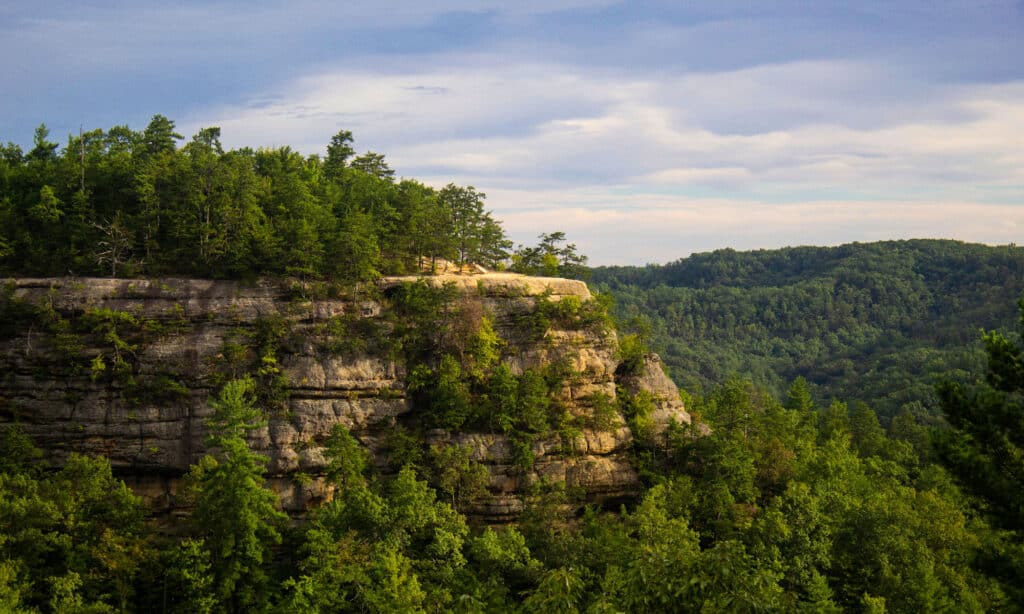Kentucky has one of the richest birding ecosystems in the country. So naturally, there are a lot of great bird-watching spots in the state for birding enthusiasts to explore. Depending on the time of the year you visit, you can spot several native bird species across various sites in the state. Many migrants and rare vagrant bird species also pass through the state during their seasonal migrations. Most of the best bird-watching spots in Kentucky are in the wetland areas. However, there are a lot of other natural habitats where you can observe various species of birds. Read on to discover some of the best bird-watching spots in Kentucky that you can check out this summer.
1. Long Point Unit of Reelfoot National Wildlife Refuge

Reelfoot national wildlife refuge is attractive to bird watchers.
©iStock.com/epantha
The Reelfoot National Wildlife Refuge is a 10,428 acres refuge located on the Southwestern edge of Kentucky. Although the park is home to various types of wildlife and scenic natural views to explore, the Long Point Unit of this refuge is particularly attractive for bird watchers. The area hosts one of the largest flocks of white-fronted geese you’ll ever see and countless other bird species.
Although this part of the refuge is closed from mid-November to mid-March, it stays open during summer. Some of the most notable bird species to watch out for include the Mississippi kite, fish crow, northern parulas, prothonotary warblers, and yellow-throated warblers.
2. Sloughs Wildlife Management Area

Sloughs wildlife management area is a thriving spot for wildlife, including yellow warblers.
©iStock.com/PaulReevesPhotography
The Sloughs Wildlife Management Area straddles the Western edge of Henderson County and northern Union county. This strip of public land is home to diverse wildlife forms. The entire wildlife management area is divided into several separate units accessible by gravel paved roads during certain seasons of the year. The most notable of these units is the Sauerheber unit which hosts several bird species.
Most of the Sloughs Wildlife Management Area is closed during the winter season. However, it is open to the public during the summer, where you can explore different units for different bird species. The headquarters is open from 8 am to 4:30 pm. Here you can get maps and recommendations on areas to visit and where to go in the park.
Whether you visit or not, birdlife in this wildlife management area is always abundant. You’ll find nesting songbirds like the yellow-throated warblers, prothonotary warblers, indigo bunting, tree swallow, and great crested flycatchers. During migration season, other varieties of songbirds, including tanagers, flycatchers, orioles, and vireos, are present in this area. The park also has numerous units dedicated to waterfowl and marsh birds like the American bittern, sora, gadwall, and northern pintail, some of which are migratory.
3. “Transient Lakes,” Warren County

American coots are seasonal birds found in the Transient Lakes.
©yhelfman/Shutterstock.com
If you’re a big fan of waterbirds, then the Transient Lakes in southern Warren County should be on your list of best bird-watching spots in Kentucky. As the name suggests, the Transient lakes are only there during certain times of the year. For the most part, the area that hosts the lake is just depression with relatively flat farmlands. However, during periods of above-average precipitation, water fills up the depressions, forming lakes that draw various species of water birds to the area.
The largest and most notable of the Transient lakes in this area is McElroy Lake. Although located on privately owned land, the area is open to anyone to visit. A companion lake located not far from McElroy is Cheney Lake. This is a state-owned nature preserve that is popular with bird watchers as well. Other smaller bodies of water are also present in the area.
As mentioned earlier, the central theme when you visit the Transient Lakes is waterbirds. Various species of these birds are drawn to the shallow waters in this region. Grebes, ducks, and sandhill cranes are abundant from late winter to early spring. Later in the year, you can expect more seasonal migrants like the dabbling ducks, shorebirds, and American coots in their number. Egrets, herons, gulls, and terns also show up. The lakes typically don’t last till the end of summer, but if they do, you can expect several waterbird species to nest in the area. In addition to the waterbirds, you may also find birds of prey like the falcon, raptors, and ospreys on the lakes’ mudflats.
4. Peabody Wildlife Management Area, Sinclair Unit

The Sinclair Unit is a nesting ground for birds like the sort eared owls.
©iStock.com/Devonyu
The Sinclair Unit of the Peabody Wildlife Management Area is a large grassland area with several isolated ponds and trees. The landscape also rolls into valleys and hills, presenting a vast land for bird-watching enthusiasts to explore. While some public roads pass through the WMA, you’ll need a $12.50 permit to venture off the road and explore the wildlife management area. Permits are valid for a year and give you access to all area sections.
For summer birdwatchers, the Peabody offers an abundant supply of bird species that are less common during other seasons. This includes species like the grasshopper sparrow, orchard oriole, dickcissel, blue grosbeak, etc. They are distributed across different units in the wildlife management area. However, the Sinclair unit is the most popular among bird watchers. Short-eared owls and northern harriers nest in this area. However, they’re less common. Other not-so-common bird species to watch out for in summer include Bell’s vireo, Henslow’s sparrow, the willow flycatcher, and so on.
5. Red River Gorge/Natural Bridge State Resort Park

Red river gorge is known for its songbird population.
©Asia Dudik/Shutterstock.com
The Red River Gorge and the associated Natural Bridge State Park is one of Kentucky’s richest and biologically diverse regions. Located on the western edge of the Cumberland Plateau, this area hosts diverse habitats with many scenic cliffs, bluffs, and caves accessible by paved looped roads traversing the area. The entire area is known for its rich woodland songbird population.
The best time for birding in this area is during the summer season when a large number of warblers nest in the area. This includes species like the northern parula, yellow-throated warbler, black-throated green warbler, and pine warbler, among others. Vireos and Acadian flycatchers are also quite common. This region is also where you’ll find the only nesting population of red-breasted nuthatches. In addition to these nesting populations, large flocks of migratory birds pass through the woodlands during different times of the year.
A warning to birders: this region is known to host a stable population of snakes that are less common in other parts of the state. While encounters are not so common, birders should watch out for them.
The Berkley dam, Jonathan Creek Embayment, Lake Peewee, and Cumberland Gap National Historical Park are a few of the other notable bird-watching spots you can check out in Kentucky. You can visit these locations any time of the year, but it is best to research further to know the best time to get the most out of your trip.
Up Next:
Hawaii’s 5 Best Bird-Watching Spots This Summer
New Hampshire’s 5 Best Bird Watching Spots This Summer
Top 10 Birds You Can Spot on National Bird Day
The photo featured at the top of this post is © Asia Dudik/Shutterstock.com
Sources
- Birdwatchers Digest (1970) birdwatchersdigest.com/bwdsite/explore/regions/southeast/kentucky/ten-birding-hotspots-kentucky.php
- Bed and Breakfast Association of Kentucky, Available here: https://www.kentuckybb.com/Blog/BestPlacesforBirdWatchinginKentucky.html
- The Bird Guide, Available here: https://thebirdguide.com/birding-in-kentucky-best-birdwatching-spots-in-the-state/#Peabody_WMA_Sinclair_Unit
Thank you for reading! Have some feedback for us? Contact the AZ Animals editorial team.






